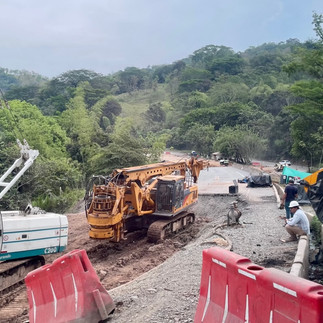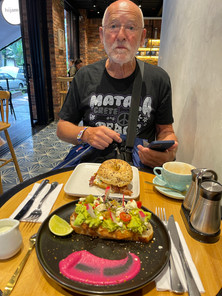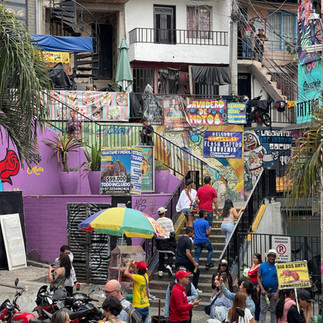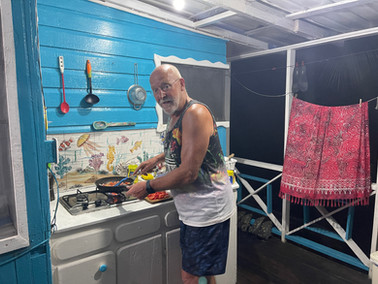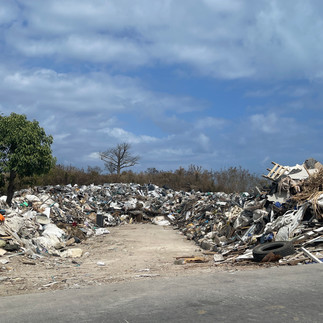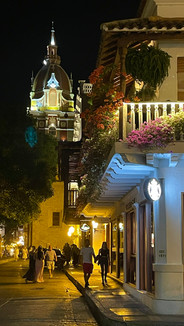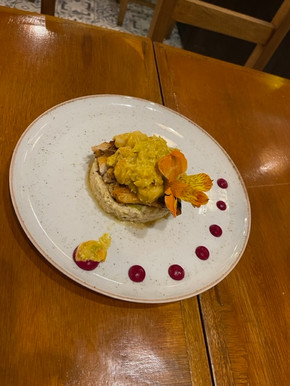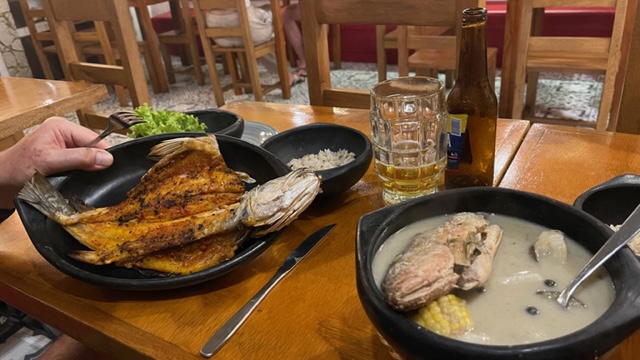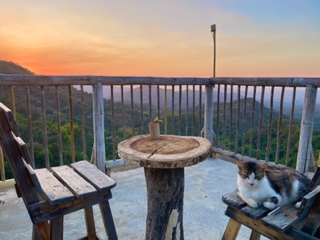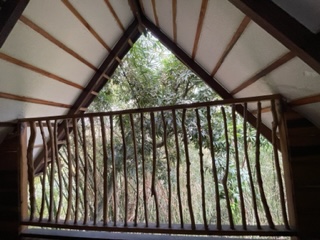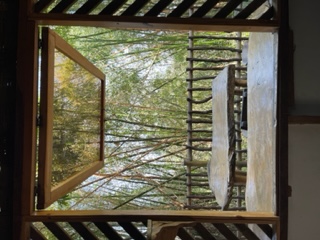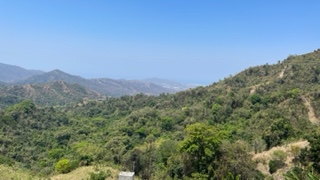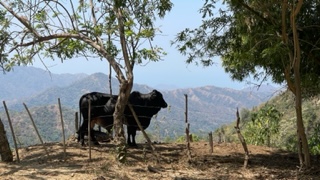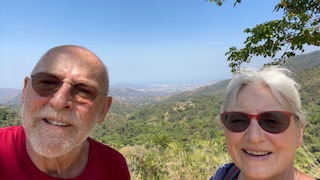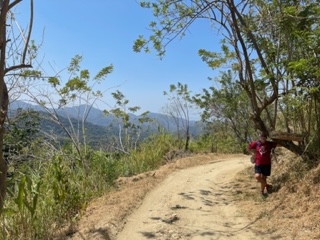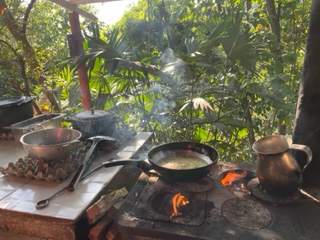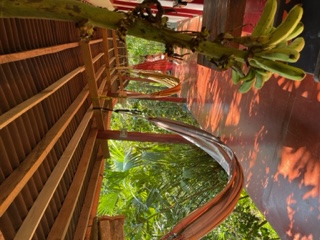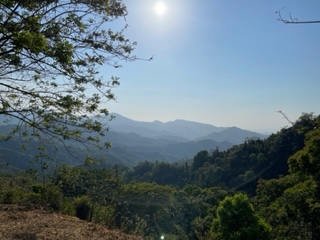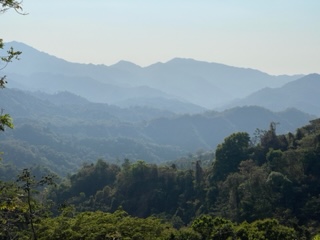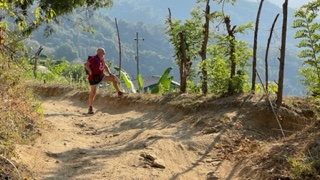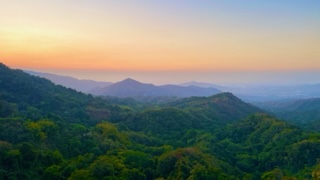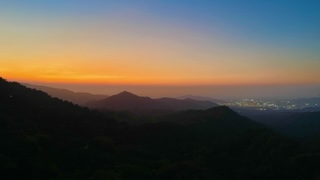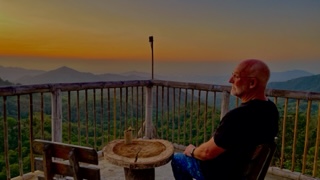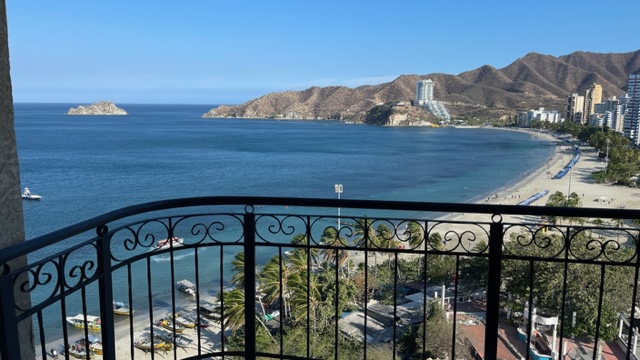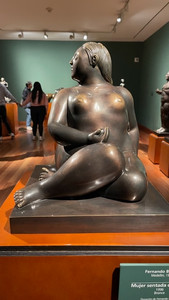Travel blog Colombia 2023: 44 days of exciting adventure from the perspective of mature travellers
- lisaluger
- Feb 13, 2023
- 68 min read
Updated: May 29, 2023
After the long Covid-related break, David and I are finally travelling overseas again. This time to Colombia. We are very excited about the adventures that await us. The last trip we made to Colombia was in 2015.
Over the next few weeks, I will report here on our blog about our trip. So, if you want to follow our progress, look at the blog from time to time. Enjoy.
https://www.rememberrelatereflect.com/en/post/travel-blog-colombia-2023
Lisa

15th and last Post
2nd April 2023, Bogota – last day of our journey
Our next stop was Salento in the coffee-growing area in the southern part of Colombia. We had visited the area before and were looking forward to getting back to the beautiful verdant mountains and walking in the hills. Friends forewarned us that the recent heavy rainfalls in the last four months (unusually heavy and clearly a sign of climate change – so we were told) had caused landslides, and many roads were seriously damaged. We did not really understand the full impact of this until we were sitting on the bus going south to Salento. According to our guidebook, the journey should take 6 hours. However, we were told by the bus driver to expect a journey time between 8-12 hours, but we thought he might have been exaggerating. But soon, the bus had to slow down because of potholes in the road, some of them so big you could lose a motorcycle in them. After that, we had to stop several times because of ongoing road works, and once we passed, we could see that parts of the road had been swept away. The road followed the river, and the heavy rain had caused landslides which, in parts, had washed away the roads and in others had completely closed the road. Often the bus had to drive a diversion to get back onto the road. Bridges were missing, and makeshift bridges had been erected until the old bridges had been repaired. The traffic on both sides often came to a standstill because the road had to be closed until they repaired a section of the road. When this happened, we had to wait sometimes for up to 40 minutes until they reopened the road. It finished up a long day, and we admired the bus driver for his patience and stamina, for he was our only bus driver. After 11 long hours of sitting on the bus, with only one break after 5 hours, we finally arrived in Salento.
Eight years ago, we stayed in Hostal Ciudad de Sorgorbe, run by two lovely gay guys, one Colombian and one Spaniard. They had bought an old neglected hostel and developed it into a very elegant and tasteful place of rest for travellers. The rooms were colourfully painted, the house was decorated beautifully, and the included breakfast was sumptuous. The patio was a great place to meet fellow guests, and we met interesting people with whom we did guided tours and walks.
Because of our past experiences, we wanted to return, spend the last few days of our tour, and finish our trip on a high before returning to Bogota and starting our journey home. So spontaneously, we went online, found they had a vacancy and booked three nights in this hostel.
It had recently rained when we arrived in Salento in the dark. We checked in and discovered that the hostel had changed hands several years ago. The two guys had moved to Cali, probably, they felt they would fit in better in a big city, the salsa capital, than in a conservative village up in the mountains. The place was much as we remembered it, it was clean, but we felt it had lost its soul. Breakfast was not included, so we hardly met any of our fellow travellers in the dining patio area. The intimate atmosphere we remembered from last time had disappeared, and now the hostel felt just like any other.
After checking in we dropped our luggage in our room and quickly went out to find somewhere to eat because most restaurants closed shortly after 8 pm. The village restaurant that we liked to eat at last time still offered great traditional Colombian food. We ate their recommended speciality, local trout, and it was out of this world.
The forecast for the next day was for rain mid-afternoon. So, we got up early and at 8 am, we took one of the communal Willys jeeps to start our 5-6 hours walk in the Cocora Valley. These jeeps are modified versions of the original 1940s Willys Jeeps. They now have diesel engines rather than the original petrol engine. The wheelbase has been extended to enable them to carry up 12 passengers, of which three have to stand on the rear step and hang on for dear life as the 25-minute ride to the valley is very bumpy. We started the walk beneath a blue sky and sunshine. Due to the recent heavy rain, the track leading up to Cocora National Park was rocky and very muddy. As we progressed upwards, the clouds increased, but we were well prepared for every eventuality, i.e. rain. Eight years ago, the walk was free. After 30 minutes of walking, we discovered this was no longer the case. We came to a booth and a locked gate, where we had to pay an entry fee of 6000 Cops each (about £ 1.30, or 1.40 Euros). This fee was introduced by the landowner because the track crossed his land. This may not be much, but this could be classed as a tourist tax, and as we found out, the track had become very popular. At some points, it felt like we were walking along Oxford Street.
Even though we thoroughly enjoyed the walk, crossing over the seven rickety wooden bridges and sweating our way through the rain forest up the hill to the hummingbird junction, where you could extend your walk by another few kilometres to visit the hummingbird centre. We chose to revisit the hummingbird centre and take photographs of them. The entrance fee of 15,000 Cops per person entitled you to a bowl of hot cocoa and a huge piece of local cheese, which we enjoyed very much after this long and sweaty uphill hike. Unfortunately, the kind old man who ran the place recently had retired. Also, there seemed to be fewer hummingbirds than last time, nor were there any of the many cusumbos (racoon-like local creatures) that we had seen and photographed last time. We were told they had long since disappeared. Maybe the increase in tourists visiting the area had something to do with it and these shy creatures took to the hills.
We continued our steep and muddy walk up to the peak (3000 m) and were very pleased that from this point onwards, it was downhill all the way. The recent rain had produced a soft and sticky mud, and this combined with the steepness of clambering up between tree roots, stones and streams of water made for a difficult and in parts dangerous hike. We were more than glad when we reached the top, especially as we were now shrouded in the rain clouds and we expected rain at any moment. We felt sorry for those walkers who did the tour the other way around and had to go down these steep and often treacherous tracks. We now had an easy descent back to the valley floor passing the beautiful tall wax palms, which only appear in this area of Colombia. Unfortunately, the increasing cloud cover obscured the view of the valley. Fortunately, we had lovely views during the morning uphill hike. We promised ourselves to return the next morning to take more photographs of the surrounding scenery if there was to be a morning of sunshine, because the clouds and rain appear after midday. Shortly before reaching the valley, we came to another booth and locked gate. Again, the local landowner charged a fee to cross his property. This time the cost was 10000 Cops per person (approximately £2, 2.30 Euros). David questioned this charge, having already paid at the start of the walk and we were given the choice of either pay up or walk back. We paid, under duress, and continued. It was not about the money, but the principle. This is the price to pay for the increase in tourists.
When we finally arrived back in the valley, there was a kind of carnival atmosphere of the tackiest kind. A kiddie’s fairground, noise, food, drink and kitschy tourist trinkets on offer. We couldn’t get out of there quick enough. We took the Willys jeep back into Salento beneath a lowering sky and arrived back just before the heavens opened.
Dave's video clip of pour down in our hostel
The next morning was disappointing weatherwise. It had rained all night and parts of Salento were still shrouded in clouds. Even so, we decided to take another ride in a Willys jeep back into the Cocora Valley. This time we avoided the fees by walking around the valley floor and along the river. It did brighten but the sun never came out fully. Nevertheless, the cloud cover lifted and we had a decent view of the valley in the isolated moments when the sun broke through the clouds. A downside of our morning stroll was the number of people who rented horses to ride along the river rather than hiking in the hills. We lost track of the number of horses that passed us, maybe 100 plus. Not only had you be careful of the horses passing by on the narrow track; you had to be careful where you walked as there was horseshit everywhere and the smell of farting horses was overpowering. Moreover, the horses’ hooves also churned up the already muddy track. Soon we were sliding in the mud and horseshit, fighting to stop from falling over. With walking boots that felt as large and heavy as deep-sea divers’ boots we walked back to take a Willys jeep back to Salento.
,
Our days in Salento flew by and before long we were on our computers researching ways to get back to Bogota. Salento is very isolated and to get back to Bogota you had to take a bus to Armenia and from there a bus to Bogota. We had already been told that the usual 5-hour journey time from Armenia to Bogota, would now take at least 11 hours because of the recent rain and landslides, on top of the two hours it would take to get to Armenia from Salento by local bus. The alternative, a 50-minute flight from Armenia to Bogota was very tempting and finally we decided to fly as the cost of the flight was very reasonable.
We took the local bus from Salento to Armenia. Luckily, we set off early from Salento because the road was, once again, closed both ways for repairs, and the bus driver stopped the engine. The driver and the local passengers were calm, but as time passed by, we were getting a little apprehensive as we were already waiting for over 20 minutes and had a plane to catch. Lisa talked with some of the locals and asked what was going on and was told, it’s a traffic jam because of the road repairs. We were told this was a regular occurrence and the locals were used to it. The stop could be anything from 5, 20, 30 or 50 minutes or longer. Rarely it would exceed an hour. How reassuring. Local opinion is that the ongoing heavy rain and landslides were the direct result of climate change. Fortunately, after 45 minutes the road reopened and our journey continued. At the Armenia bus station, we were very lucky in that the airport bus was just about to leave and we just managed to get on it. Lisa was here 1988, just before a devastating earthquake had struck Armenia and the landslides from the surrounding mountains had covered parts of the city. Lisa asked how people felt now more than 30 years after the earthquake. He simply smiled and said, whenever there is a tremor, he’d run as fast as he could – and so would his fellow Armenians.
The flight was a little turbulent but uneventful. Our friend, Patricia, could not pick us up at the airport because it was the day when she could not use the car (national restrictions on car use to reduce pollution dictate that you can only use your car -depending on your registration number- every other day from Monday to Friday). No problem. We took the K86 airport bus to the start of the transmilenio bus station, El Dorado, and from there a direct transmilenio bus, the number 1. 50 minutes later we got off directly outside of our friend’s block of flats.
How lovely was it to be back where we started our adventure, approximately six and a half weeks ago. Bogota is 2600m above sea level and at 6am in the morning the temperature was 8C. During the day, the sun came out and it warmed up to about 19C. Even so, the sun is so strong at this altitude that Dave needed to wear his hat to avoid burning his head.
We spent a few very nice days in the house of our friend Patricia and her friends. We were spoilt rotten with great food and taken to some of the more interesting places tourists don’t get to see.
The time now is 1 pm, and we have another 5 ½ hours until we have to be at Bogota’s International El Dorada Airport to start our journey back to Heathrow Airport via Madrid. In the meantime, Patricia cooked a fantastic Colombian meal for us, and soon we will feast with Patricia and some of her friends.
Will we miss Colombia? You bet. And we have already been invited back.
We had a very eventful and thought-provoking time here. This is a country of many extremes. We met very kind and interesting people who gave us a deeper understanding of the country and its turbulent history. The glue of the country is its people, and we have been very fortunate to have been welcomed with open arms by friends and strangers who asked for nothing in return.
This is a country we will certainly return to, and we leave with many happy memories of places, people and friends.
Lisa and David
14th Post
26th March 2023, Medellin

We were sad having to leave our lovely island. However, there is so much more to see and to do.
And by the end of the week, the mosquitos were winning. We had more lumps on our bodies than ever before. On Dave’s back I counted 61, without taking into account those on the arms and legs. I had 48 on my back, and 28 on my left, 26 on my right arm, not counting those on the rest of my body. We were itching all over.
The final score: Mosquitos 10: Dave and Lisa 0.
Medellin has been known for the last decades as the most violent city in Latin America, if not the world. However, we have been assured that there have been massive changes and that Medellin is now a safe city, a heaven for tourists. The new disco capital. Anyway, we wanted to check out for ourselves. So our next stop on our Colombia tour was Medellin.
We had been warned of lots of criminal activities in Medellin, including cheating taxi drivers at the airport. And really, when we arrived at the airport, the taxi drivers were all over us, more than the mosquitos in Providencia. So we thought we were clever and asked a nearby policeman to help us find a trustworthy taxi and negotiate the rate for us. We found out the common rate is 100.000 Cops Columbian Pesos (that is approximately 20 Euros or £ 18) for the 25 km journey to Medellin. We found a taxi driver that accepted that price and gladly climbed in his taxi. By then, it was almost 11 pm, we were tired after a long day of travelling and were eager to get to our accommodation.
Shortly after the taxi had left the airport, the driver suggested showing us the sights of the beautiful city of Rio Negro, where the airport is located and also those of Medellin – against a tip, of course. I reasoned with him that there was no need for that because it was dark outside, and we could not see anything anyway and we were tired and wanted to go straight to the hotel. He ignored me and insisted on telling us about the beauty of Rio Negro until David barked at him, saying that we wanted to go straight to the hotel. Then he sulked a bit, but soon he talked again, saying that the new tunnels were a better and shorter way to get to Medellin. I didn’t know the best way or whether this was a trap to get more money out of us. Dave looked the journey up on Google Maps, and we followed closely whether he kept on this route. Then the taxi driver made a phone call, telling the other person that he was driving two Gringos to Medellin, and while speaking to the other person, he blessed himself. He explained to me that he just had talked to his elderly mother to get her blessing for this journey. How weird! As a taxi driver, he was supposed to be driving a lot, and we doubted that he would ask his mother for a blessing for each journey. Our antennas went up straight away, and we thought perhaps he had just spoken to one of his mates that he was driving Gringos and would lure us into a trap. We did not trust this guy at all. He went on to say how much he loved his mum and that he was always looking after her, that what a devoted son he was. I thought perhaps this was his strategy to make me soft towards him, possibly being the same age as his mum, and give him a generous tip. And really, when we finally arrived at our hostel (we were very relieved), Dave gave him the agreed amount of 100.000 Cops, but he was very disappointed and even disgusted with us that we were not giving him a tip. He turned the 100.000 Cops over and over in his hand, looking expectantly at us and arguing how difficult life was in Colombia. He could not believe that we were so ungrateful for his service. I had checked before with our friends and found out that one only paid the agreed amount with taxis and that no tip is required. We felt we were not at fault here and simply walked away, and finally, he drove off. So sorry, mate, but not with us.
In our search for accommodation in Medellin, we found an affordable hostel with excellent reviews.: “Best hostel worldwide”. Okay, that should do. The ‘Hostal de los Patios’ is very well-run and well-organised. It has 35 dorms with 4, 6 or 8 bunk beds in a room. Each bed has a curtain around for a bit of privacy. Showers and toilets are shared. Travellers can lock away their belongings in lockers that are big enough to fit a big rucksack in. In the basement, it has a kitchen and fridge, as well as areas for yoga, meetings, or relaxing. The hostel has strict rules one has to sign up to, including no alcohol on the premises, no glass bottles, no drugs, and no visitors in the rooms. A bit harsh, maybe, but later we understood the reason why. Luckily they also have suites, which means private rooms with private bathrooms. That’s our preferred option as we feel too old to sleep in dorms. Our room is tiny and has a window out towards a dark corridor. Not much privacy when the curtains are open. Like in St. Pauli, where the available ladies display themselves in windows. As always, we make do with what we got.
The building has six floors and is built around an open patio for circulation. It is open to the elements., so when it rains the rain waters the plants in the patio below. There is also a rooftop for a swimming pool and a bar, which thankfully closes at 11.30 pm. This area is like an echo chamber as the sound travels down. In addition, we are woken up at 3, 4 or 5 am by the people returning from the bars and discos. Los Patios is very popular among young people. They can meet other likeminded people, take part in many activities that are offered by the hostel, such as yoga or dancing classes, tours to explore Medellin. Very popular are also the social activities, such as organised drinking games, or pub crawls or going around town on disco busses that drive around from disco to disco until 4-5am. It’s a lot of fun, we are told, and lots of drinking is involved. We decided for a quieter way to spend our evenings in Medellin, but have to suffer when they came back, making lots of noise. There were always some very pale faces and hangover-stricken participants the next morning on our walking tours to explore Medellin.
It's amazing, but on our travels, we seem to only meet young people, mostly in their 30s, hardly any grey-haired older travellers like we. Where are they? They possibly travel differently and stay in more expensive hotels. The young people we meet come from all over the world. Some are on a gap year, travelling and doing some volunteering work, one we met worked on a coffee finca. Another we met travelled the South American continent in 3 weeks, and ‘did’ Medellin, Quito and the Galapagos. Others we met travelled for scuba diving or paragliding opportunities. Some travel as couples, others in groups or singles. Hostels are always a good way to meet other people and exchange ideas, tips and experiences. What astonished us, was the amount of money some spent, i.e. in many bars a cocktail drink cost the same as we had budgeted for an evening meal. Also they are much more versed with their mobiles than we are. Almost all pay using their mobile phones. Often we see them in cafes or bars on their own on their laptops or mobile phones making full use of the free wifi. Today's young people seem to have a different attitude toward travel than we did when we were their age. Low-budget travel doesn't seem to be necessary. They have grown up in the age of electronics and social media and don't let their contacts get in the way of travelling. We had no means of contact back then, and we still see a positive aspect of travel in temporarily disconnecting from our everyday contacts. Sometimes we feel ancient, like dinosaurs. Never mind.
Medellin is the 2nd biggest city in Colombia after Bogota. It has 4 million inhabitants. It is a huge city that follows the valley of the river Medellin, cushioned between mountains on both sides of the river. Medellin is well known for its violent history and being home to drug lords, guerrillas and common criminals. In recent years, Medellin has made an astonishing development. We wanted to find out more about this interesting city. But where to start? As so often, we explored the city via public transport, and Medellin’s overground Metro system is ideal to do that. So we bought a ticket and travelled up and down the metro lines to get a feeling and overview of this vast city and its very diverse districts along the river, from wealthy areas to very poor neighbourhoods. We went on two city walking tours and visited a memory museum to explore the city's troubled history. We also walked around, listened to various bands playing music at a square, watched couples dancing to the sound of bands playing Cumbia at the Plaza Berrio, and watched young people performing hip-hop dance moves.
Here a few of David's video clips:
We soaked up the atmosphere and got to know a bit more about the people and the city. Here a short resume.
In the 80s, Guerrilla groups and drug gangs operated in rural areas. Their violent activities and threatening behaviour drove many of the local population, mostly farmers, to leave their homes and come to the city of Medellin for safety and a better life for their families. Those arriving in Medellin, without much money, started building makeshift homes up on the hills at the city's edge, hoping to find work and earn a living. Over the years, more and more families arrived and more and more houses were built along the slopes of the hills on both sides of the valley. However, these houses were built illegally, without infrastructure or streets. There were only little paths between the houses, only later steps were built. However, access to these densely populated areas was difficult and the logistics, i.e. the provision of essential things such as electricity, water, sewage and food was very complicated. The inhabitants in these neighbourhoods were basically cut off from the rest of the city, from education and from jobs. Few found work but all had families to feed. Many inhabitants therefore were open to manipulation by the drug lords who offered them money for doing all sort of jobs for them. Soon criminal gangs developed, competing with each other and manipulatingthe area. Also, over the years, members of the guerrillas with links to some of the inhabitants, came to visit and even live in the area, using it as a base.
Soon Medellin’s poor neighbourhoods became a cauldron of criminality and violent fights between criminal gangs, and the population was caught in between. In many areas the police could not enter, because the houses were so close together, no street access, and the criminal gangs had lookouts to observe who was coming into the area. When they saw police coming, they quickly disappeared, or attacked the police.
These poor communities became entangled in the ongoing war between the drug cartels and drug gangs and the guerilla. On the other hand, drug lords and guerrilla were loved by some and hated by others. They offered support and protection to the locals, but, of course, against favours in return. Soon the violence increased and it became unbearable for those caught in between. In order to try to control the criminal gangs and violence, in many areas, the local population set up Militia groups for self-defence. However, these militia groups were soon infiltrated by people secretly allied with the paramilitary, the police and even the military. Police at that time were not able to get into the community, so the paramilitaries were called in and did their work for them.
Pablo Escobar, a drug lord and founder of the Medellin Cartel, played an important part in Medellin’s violent history. In the 1980s, Congressman, Pablo Escobar, was thrown out of Congress and pledged war against the city. Over the years, he became the ruthless Drug Lord of the Medellin Cartel, bringing lots of violence to the city, including hundreds of car bombs and bomb attacks on mass events killing many innocent people, including children, which ended in a terrible situation for the population of Medellin. He also sponsored some of the guerrilla attacks between 1980 and 1991 and led a war against the other Drug Cartels, mainly the Cali Cartel, giving Medellin the honour of being the murder capital of the world. Some people saw Pablo Escobar as an angel, because he was also very generous. For example, in the neighbourhood Juan Pablo II he constructed 300 houses for poor people. Of course, they had to work for him and do him favours in return. 1989 he was arrested but made a deal with the Government that he could stay in a luxury hotel compound rather than in a prison. Once he became aware, that he was about to be moved to a real jail, he escaped, killing many people in the street and many of his colleagues at the Cali Cartel who had betrayed him. On December 2, 1993, Pablo was killed on a roorooftopf-top during a shoot-out as he was trying to flee from the police. However, rumour has it that he took his own life so he would not fall into the hands of the police.
Even after Escobar’s death and the destruction of the Medellin Cartel, drug gangs continued to work and infiltrate the slums. This was in particular the case in ommune 13, a district notorious for its violent fights. The Commune 13 was also strategically important as it is located along the nearby highway and was soon used by the drug lords as a stop-off point for drugs before they were transported out of the country. At one point in the 90s, 6000 tons of drugs per day were going through the Commune 13.
In the late 90s, the police started a number of raids into of cleaningCommune 13 with the aim to arrest and kill members of the guerrilla groups; they did not target the operating drug gangs. In 2002, the Colombian military led a controversial operation named Orion with the ambitious goal to clean the most dangerous neighbourhood in Medellin. With the help of the paramilitary, who pointed out potential suspects, the military killed many and sequestrated hundreds that were wrongly accused by the paramilitary, or are still missing today. Many innocent people were killed, who were wrongly accused by the paramilitary, or were caught in the crossfire that lasted many days. Even some children were killed. The operation might have removed left-wing guerrillas from the district. However, the military then gave control of Commune 13 to the paramilitary groups, who then tried to control other parts of Medellin.
This violent action in 2002 was a wake-up call for the poor neighbourhoods but also for politicians and others in authority. The Medellin city authorities recognised that something needed to change in order to reduce the rate of criminality and violence in the city. One of the city’s most famous artists, Fernando Botero, who was born and lived in Medellin, sponsored many educational and cultural activities and campaigns and also organised the creation of parks, sports fields and green spaces for outdoor activities for young people.
Another important change for the inhabitants of these poor neighbourhoods came in 2004, when German and Spanish engineers built cable cars from some metro stations up the hills to the poor neighbourhoods. These free cable cars connected these neighbourhoods with the rest of the city, enabling them to get to school, get work, and move around. This brought a big transformation to the people and brought some stability to Medellin.
In the notorious Commune 13 things also had to change. Local government gave young people from the Commune 13 free paint to strengthen their sense of community and channel their frustration into a creative force. Soon schools and shops followed their example and engaged young people into creative activities, such as making graffiti an art form. Moreover, in the Commune 13 it was also a creative public transport option that brought vital change to the community: a number of outdoor escalators were installed that connected Commune 13 with the rest of Medellin. This increased people's mobility, eased the neighbourhood's logistic problems and enabled access to the houses within Commune 13. In the following years, the Commune 13 developed into a lively place with many graffiti on the walls that express the young people’s views and the history of the Commune. This development created a communal spirit amongst the inhabitants of the Commune. The colourful graffiti have also attracted tourism and, thanks to the outdoor escalators, local and foreign tourist can come and visit ommune 13 and observe the astonishing changes in the neighbourhood – against a fee, of course.
We also took part in a Graffiti tour in the Commune 13. We saw beautiful and plentiful murals, walked between the houses, climbed the stairs and rode on the outdoor escalators, admired the many motorbikes that transported goods into the neighbourhood and took in the atmosphere. We watched young boys and girls perform hip-hop dance routines. Locals were selling drinks, ice cream, some local dishes to eat. There also provided clean toilets, for a price, for the tourists. We felt safe. We met many smiling people full of hope for the future.
Commune 13 seems to flourish. Of course, we only spent a few hours being guided around the neighbourhood, too short to get an in-depth view. However, the transformation is only eight years old. Therefore, we do hope it works for the people of this and other similar neighbourhoods and that the tourist business model does not get highjacked for other purposes. We also hope the money from the tourism project does not line the pockets of the chosen few but benefits the community as a whole.
13th Post
19th March 2023
We are currently in Providencia, a tiny island in the Caribbean, 90 from San Andres. Providencia is closer to Nicaragua than to mainland Colombia.
Providencia used to be the first English colony in this area in 1629 but it was taken by Spain in 1641. However, this did not prevent the pirate Henry Morgan (after whom the rum Captain Morgan was named) from setting up a hub here to raid the ships of the Spanish empire, apparently with the permission of the English crown. During colonial wars, King James II had authorised privateers to raid Spanish and French ships, with a percentage of the profit going to the English crown. Sir Henry Morgan, the captain of a privateer ship, was knighted by the King for his efforts for the crown. He was a very controversial figure. For some, he was a ruthless pirate; for others, he was a hero. He was successful and became very wealthy, and later became involved in the politics of Jamaica. He owned three big plantations in Jamaica, where many African people worked as slaves. Rumour has it that much of his treasure remains hidden on the island of Providencia in Captain Morgan Cove. On our last visit here, eight years ago, we went to the cove, like many other tourists, but could not find anything.
It is difficult to get to Providencia. So, when we arrived in Providencia three days ago, we were exhausted from the journey. We had left Dona Lucia’s house in Cartagena at 9 am to catch our plane to the island of San Andres at 10.36 am. From there, at 15.10 pm, our flight to the island of Providencia was scheduled. According to the schedule, the plane was due to leave at 9.36 am, but the day before, we were informed that our flight would leave one hour later. How wise that we had chosen the later connecting flight from San Andres at 15.10 pm rather than the 12.20 pm one, even though it meant a long wait at the boring San Andres airport. The flight from Cartagena was delayed once more, and I was messaged by the airline company long before the airport staff announced it. But no further information was given for at least an hour. The friendly staff were useless; probably they did not know either. We got nervous and anxious about missing our connecting flight. Finally, after 2 hours of waiting, we boarded and, after a 1 ½ hour flight, made it to San Andres. There we had to go through customs again and show our tourist cards to several officials (even though it was a national flight), and, once through the procedure, queue for our boarding passes.
There was a long queue of passengers going to Providencia. I was worried as I had not had any contact with the airline SATENA since I bought the tickets and was not able to do an online check-in. Perhaps they had forgotten us and overbooked the flight. Also, last time when we went to Providencia, there were only 12 people on the flight. Now more than 40 people queued. Luckily, everything worked out fine, we got our boarding passes.
We just had enough time to grab a drink and then went to the dedicated gate to Providencia, only to be waiting there again, not knowing when we would be leaving. On the other end, in Providencia, we had a driver waiting to bring us to our accommodation, and now we were late. We don’t like to be late and let other people down. Finally, we set off on a 40-seater propeller aircraft, and after a 30-minutes flight, we arrived in Providencia. There we had to queue again; this time, we had to wait outside in the broiling heat until everybody had their passports and tourist cards processed. This took about 40 minutes then we were through and were greeted by our driver. We arrived at our accommodation at 17.30 pm. This was a long day of travelling. We were exhausted and wet through.
Last time we were here, eight years ago, we split the journey and stayed one night in San Andres in a hotel near the airport as our flight was early the next morning. The hotel was horrible, with loud TV noise from the other neighbours all night, the room was hot, mosquitos buzzing around, and the air-conditioning did not work but only made loud noises. The bathroom and toilet were dirty. We both were not able to sleep and finally got up at 4 am, and after a cold shower in the filthy bathroom, we left and rolled our luggage to the airport. There we sat on a bench outside in the dark, glad to have escaped this awful hotel and waited until the airport opened at 6 am. Then we grabbed a cup of tea, ate something, and boarded a 12-seater CESNA propeller plane, leaving at 7.20 am. This time, we did not want to risk having to go through a similar experience again. We wanted to get to Providencia as quickly as possible.
Another option to get there is via boat from Cartagena to San Andres and then from San Andres to Providencia. San Andres is 719 km from Cartagena and 215 km from Nicaragua. Most people take a flight because the boat options are not viable, apart from private Cruice ships going there. A boat from San Andres to Providencia is possible. It usually takes 6 hours, but passengers are warned because the sea is frequently rough, and many people get seasick. I did not want to take this risk. I had had enough of kicking boats. 20 years ago, we were in Grenada and travelled by boat to some of the smaller islands. One morning we had to leave our cabana early to catch the 6 am boat back to Grenada. At 4.30, Dave made breakfast with our remaining food in our fridge: an omelette made of 5 onions and one egg!!. Later when our little motor boat passed the ‘kick em Jenny’ (this is an active submarine volcano on the Caribbean Sea floor 5 miles north of the island of Grenada that would bubble up with gases that stank horribly), I felt awful from the kicking Jenny and the onion omelette. This experience has stayed with me since I am not keen on boat travel.
Now, we are in Providencia. We rented a cabana via AirBnB, called Sunset Hill, on the island's western coast. It is a tiny house; in fact, it is tinier than it looked in the internet photo. It has one room with a big bed, a fridge, a wardrobe, some shelves and a bathroom. It has two verandas and an outside kitchen. Here we spend most of our time. The cabana is lovely, the outside kitchen is cute, and it looks like a dollhouse kitchen. The sea is just on the other side of the road. From our kitchen veranda, we have the perfect view of the sunset. It almost feels like paradise if only there were not so many mosquitos. Often we feel like scratching our backs on trees like the bears do. But there are worse things.
We also have two pets. Two lovely iguanas. We called them Mr and Mrs Igy. From nose to the tip of the tail they are about 1.20 m long.
Here are two of David's video clips, one of our house and the other of a sunset on our favourite beach in the nearby Southwest Bay
We are tired of eating out every night, so we are glad to have a kitchen. We stocked up at the local supermarkets and also found a fishery cooperative where we bought a big pile of king prawns. On the first morning, while breakfasting at our kitchen table, we saw a motorbike passing by. The driver steered the bike with one hand because in the other, he carried a big tuna fish, almost 1 m long. That would definitely be too big for our small frying pan. Today we wanted to buy some fish from the local fishermen as they came back from fishing. We selected two small ones and when we wanted to pay they refused our money but gave them to us without charge.
It is fascinating sitting on our veranda and watching the world go by. Many locals on motorbikes carry all sorts of things, such as 30-litre water barrels, gas containers, bags of cement, potatoes, shopping etc.
The public transport on this island is almost non-existent. Very popular, because affordable, are motorbike taxis. We hired a scooter to be mobile. With our little scooter we race along the island 7km from the north to the south and 4 km from the east to the west. There are a few fine beaches on the island with white sand and turquoise water. The beaches are empty, only a few tourists or fishermen are to see. Tourists congregate at sunset at the beach bars. During the day, many of them are out snorkelling or scuba diving. We are just here to relax and make the best of our time here.

We are lucky to be able to be here because, in November 2020, the island was devastated by two Hurricanes. Eta hit the island first; then, 2 weeks later, Iota, a 5 grade Hurricane, struck and destroyed 98% of the infrastructure of the island. Luckily, only one person died. Locals told us of 7m high waves that swept onto the island. For 24 hours, the 5000 inhabitants of the island of Providencia had no electricity and no way to communicate with the rest of the world. Most of the houses were destroyed, and many families became homeless. A big international help campaign was launched to help the islanders set up home again and to repair the infrastructure. Of all this, we had no idea until we came to Colombia, possibly because we were so much focused on our problems with Covid and our Johnsonian government.
Now 30 months on, about 958 new houses have been built, but the destruction is visible everywhere. All around the island, restaurants, hotels and houses, which we remembered from our last visit, no longer exist; new homes have been built, but many are still in urgent need of repair or are still in the process of being rebuilt.
For example, the Hotel Deep Blue, the best on the island, which in the past we had often visited for cups of tea or sat on the stairs with our mobiles because they had wifi and we used their clean toilets. This luxury hotel consisted of several houses with infinitive pools on the roof and a jetty from which boats to the nearby crab island launched. Since the hurricane stroke 30 months ago, the hotel has been abandoned, and nothing has been done to repair it. Dave found a photo of their jetty and cafe terrace from our trip in 2015 to compare with the current state of it, and the once very elegant entrance to the main house.
Trees are destroyed, palms are without crowns, and mountains of rubbish (including walls, furniture, fridges, washing machines, toilets, and children’s toys) have piled up all over the island in the hope that somebody will shift them eventually. But how can you do that on a small island? Many thoughts need to get into finding a solution for how to remove the debris. We spoke to a concerned resident whose house has been rebuilt, and now, instead of facing the sea, he looks out at a growing mountain of debris collected from destroyed homes and possessions.
Miraculously our little cabana survived with only a minimum of damage. However, the houses to the left and to the right were completely destroyed and had to be rebuilt.
The people of Providencia are uncertain of the future. The island lives off tourism, and unless the infrastructure is repaired and the debris removed, this will affect tourism. And, with today’s climate crisis, the people of Providencia are weary of history repeating itself.
The other night I woke up because the bed was shaking, and loud noises could be heard outside. I immediately thought a tsunami or hurricane was coming towards us again. Once I was fully awake, I noticed that the answer was a lot simpler. It was a local car slowly passing by with huge loudspeakers at maximum volume blasting out reggae music, possibly driving home from a party.
We are relieved; Life on this idyllic Caribbean island continues as normal.
12th Post
16th March 2023
We are in Cartagena. Our guidebook says: “Cartagena de Indias is the undisputed queen of the Caribbean coast, a historic city of superbly preserved beauty lying within an impressive 13 km of centuries-old colonial stone walls.“ That’s right, Cartagena’s old town is really beautiful. It is a UNESCO World Heritage Site. Its cobbled streets and alleys are lined with colourful houses with balconies that are covered with colourful bougainvillaea. We can’t get enough of it.
We were here in 2015, 8 years ago, and were looking forward to visiting the city again. But when we arrived, we were shocked. Cartagena is the antidote to Mompox, which is equally beautiful but quiet. Cartagena is loud and full of tourists who want to enjoy the beauty of the city. Much has changed. Many of the corner shops where we used to buy food and drinks have been replaced by jewellery shops, gem stores, art galleries, handicraft shops, boutique hotels, bars and restaurants. All very chic. Our favourite bar, a KGB-themed corner pub, has closed. It has not survived Covid, so we are told, and so have some of the restaurants where we ate.
A stream of vendors tries to sell drinks, cigars, ice cream, handicrafts or tours and many other things we don’t need. Some are pushy and aggressive, but the majority quickly move on and don’t want to waste their time with people that don’t want to buy. In the evenings, many musicians walk from square to square, from restaurant to restaurant, to sing or make music. Unfortunately, only a few of them are good, some don’t even know the lines, and there are too many of them. So they don’t make much money, apart from a few gullible tourists.
We admired a young lad dressed up and dancing like Michael Jackson. That was fun.
Cartagena is also a favourite destination for weddings and other such celebrations for Colombians and other nationalities. But we also noticed that poverty is much more noticeable than on our previous visit. On the streets and even in some shops are many beggars, and we were constantly pestered to buy food, nappies or clothes for their children. This was indeed very disturbing.
When we talked to locals about it they explained that those beggars were Venezolanos who had left their country to escape the economic and political misery. The people of Cartagena are not pleased about them as they put a bad light on their lovely town and Colombia as a whole.
The city of Cartagena invested lots of money to renovate the stone wall that surrounded the old town. Tourists and locals can now promenade for miles along the wall, especially during and after sunset. They also can enjoy a drink or a meal at the various newly opened posh open-air restaurants at the wall with live music. (By the way, the Colombian singer, Shakira, has a house here, facing the stone wall, the sea and the sunset.)
We spent much time sitting on the city wall, sipping our tins of beer, chatting with locals and looking at the sunset. Whilst walking along the wall during and after the sunset is very atmospheric, it is also quite dangerous, and one has to be careful. Once the sun has gone, it is dark, and there are few lights. One has to guess where the steps are or where the wall ends, and one is in danger of falling down the 20 meters to the ground below. There is no such thing as health and safety. A few extra lights would help enormously.
Cartagena has done a lot to renovate the old town. They did a great job developing the walk along the stone walls and renovating the grand houses. However, it would also have been a good idea if they invested in some more public toilets because on many street corners (and along the posh wall), it smells horribly of urine and other nasty niffs.
Equally, the area outside the old town also could do with some investment and renovation. When we walked outside the old town to the Castle of Felipe, through an area where many Cartagena people live, we had to step over piles of rubbish, dead animals, open sewers…
The authorities should definitely invest more in infrastructure for the residents. These hygienic conditions are extremely unhealthy and also unacceptable in this day and age, in our opinion. The investments in tourism bring money into the municipal coffers, but at least part of it should improve the living conditions of the locals.
Authorities, please take note, do more for the residents as they have to live with these smells and piles of rubbish! After all, we tourists are only here for a few days. This would be our suggestion – if anybody asked.
So, we spend our time strolling around the streets, admiring the colourful houses, balconies and flowers, whilst trying to avoid the areas where most tourists and vendors go, or we went at times when there were fewer people on the streets.
Once the sun goes down, we have to decide where to eat. Cartagena is full of eateries, from posh restaurants to street vendors. There are so many restaurants, and one is spoilt for choice.
Our strategy to narrow the options was for David to look at the beer prices as an indicator of the price scale of a restaurant. This way, and with the help of our landlady, we found a few very good but affordable restaurants. They offered delicious food, and we alternated between them.
Sometimes there was a queue, but then we put our name down, went for a walk for 20 – 30 minutes, and when we came back, our table was ready. As we are on the Caribbean coast, we mostly ate fish, with coconut rice, avocadoes, and fried plantains.
We stay with Dona Lucia in a colonial guesthouse. We stayed here before, and it was like coming home when we arrived. She and her staff recognised us, and we stay in the room next to the one we had last time. The house has a lovely patio with lots of plants and flowers. It is nice sitting on one of the benches on the patio, but watch out if you forgot your mosquito spray, as they are as big as jumbo jets.
The breakfast is very special too, a plate full of fruit, followed by fried arepas (bread made of cornflower), coffee and even tea (lucky me), followed by eggs cooked any way you like them. On Sunday, Dave even got sausages with his fried eggs.
The last time when we were here, Lucia’s mum was still alive. I remember the very old and fragile lady sitting in a chair all day and watching everything that was going on. She reminded me of my mom. Lucia’s mum passed away just before the Covid pandemic hit.
We chatted with Lucia and discovered that in 1983, she worked as a production assistant for the English film ‘The Mission’ starring Robert de Niro and Jeremy Irons. She worked closely with the English film crew and knew the electrician technicians with whom Dave had worked in England until he left in 1981. How small the world is!
We stayed five days in Cartagena and - despite the negative developments - are sad that we have to move on. However, we both feel that we shall return sometime in the future. Cartagena will draw us back.
11th Post
11th March 2023
All the stress of our journey to come here was worthwhile.
Santa Crux de Mompox is a lovely place. It is nice and warm here, 36 degrees and very humid (86% humidity). Mompox is considered one of Colombia’s perfectly preserved colonial towns.

Its location on the banks of the river Magdalena (the biggest river in Colombia, which connects the inland with the Caribbean coast) made it an important trade centre. Mompox was the first Latin American city that declared independence from Spain in 1810. Simon Bolivar, the great Liberator, stayed here 8 times between 1812 and 1830, so a plaque on one of the town’s squares proudly informs us. The town flourished until the end of the 19th century when erosion in the river built up too much sand in the river bed that made the river impassable for big boats. As a result, the river trade route was changed to another arm of the river Magdalena. A local man told us that a stranger had come to the town, a traditional healer, and put a spell on the town and its river. That put an end to the glorious days of its economic growth, and soon Mompox became an isolated backwater town and turned into a sleepy forgotten town.
Our Hotel Portal de la Marqueza; Dave shows we are travelling light and in the latest fashion.
No wonder that when wandering around town, one feels set back into history. The similarities to Macondo, the fictional town in Gabriel Garcia Marques’ novel ‘100 Years of Solitude' are striking. Other of his novels also come to mind, such as ‘Chronic of a Death Foretold’ and ‘Love in the Time of Cholera’, of which Dave and I had watched the film version a few days before travelling to Colombia.
There is little to do here in terms of attractions. We visited a view of the many churches and went on a boat trip up the river; we wandered through the gorgeous streets and admired the lovingly well-maintained houses with beautiful patios full of flowers. The colonial mansions are a constant reminder of the town’s faded glory and wealth. The town is also famous for its wooden rocking chairs, which residents drag onto the streets in the evenings to watch the world go by. We strolled along the river embankment and watched the boats or observed the iguanas running along the embankment or climbing up the trees. We sat in one of the many cafes or restaurants along the river embankment or on the plazas, taking in the beauty of this place and its vibrant colours.
How grand must it have been coming along the Magdalena River, getting off the boat at the jetty, and entering this town, stuck in time? There are tourists here, but much fewer than in other areas of Colombia. It still seems to be an insider tip, but this may change quickly once word goes out about the loveliness of this place.
We enjoy delicious Colombian food, but in many other areas, we visited, pizzas and hamburgers were on the main menu.
There are few cars in the old town, and most people ride on motorbikes or take motorbike taxis or a Colombian version of the Indian tuk-tuk.

On our walks through the streets, we also found and visited the local cemetery with its tombs and crypts, its marble graves and angel statues. We see many old graves and crypts, many from the 17th and 18th centuries, but also plenty of new ones. Impressive are the columbariums, walls with flowers and niches that are big enough to either contain a person’s remains or, if smaller, their ashes. Here we spotted new graves of young men, aged 19-21, in the area where I walked around I counted at least 12 of them, with photos and fresh flowers. Later, when we asked our night porter in the hotel, he explained that many young men died in motorbike accidents. Among the graves, We also noticed several cats dozing in the midday sun among the graveswe also noticed several cats dozing in the midday sun. A cemetery guard told us that they had 28 cats living here, mainly in the chapel. People come and feed them as they are considered sacred because legend has it they look after and protect the dead.
10th Post
8th March 2023 – International Women’s Day
Yesterday we arrived in Mompox, also called Santa Cruz de Mompox, a small colonial town that once was an important trading centre on the Magdalena River. Now it is an almost forgotten, sleepy little town off the beaten track, difficult to get to. But what a journey it was.
After Minca, we spent a few days in Palomino, Guajira. This is a small fishing village on the Caribbean coast. It is about 60 km from Riohacha, the capital of Guajira. From there, it is not far to the border with Venezuela and the harsh desert of Guajira. This area had not been on the tourists’ map as the poor road and transport system and the lack of water are constant everyday problems. It is only recently that a few travel companies have started to offer organised private tours.
We chose to stay in Palomino and not travel further into Guajira. The village has a main road where the trucks from and to Venezuela roll through day and night. On the beach side of the main road are the hotels and hostels. One main street leading to the beach, has many cafes, restaurants, bars and shops and little stalls selling handicrafts such as jewellery, clothes, handwoven bags, hammocks and other nice bits you don’t need. The village beach is unsuitable for swimming as the sea is rough. But there is a good spot for swimming at the local river Magdalena estuary, which is a 40-minute walk from the village beach. The locals swim here, and you can eat fresh grilled fish from a few shacks along the beach. Tour companies offer tours into the nearby Tayrona National Park. They also offer to take you up to the mountains and hand you a big lorry inner tube in which to ride down the river Magdalena to the estuary. Our expensive glasses, phones and cameras make us unsuitable candidates for such wild water sports activities. Also, eight years ago, we did the Tayrona National Park walk. Dave still remembers vividly being bitten by what seemed like hundreds of mosquitos. In reality, he had 28 bites on his back. So we spend our days in Palomino walking along the beach and enjoying the riverside, promenading along the main street, sitting in one of the many bars and restaurants and watching others promenade and the world go by. Very relaxing, and you learn a lot by people-watching.
We also chose Palomino as a strategic place to get to our next destination, Mompox. However, this area is a bit off the beaten track and may be difficult to get to. The way I found on the internet, to travel via Aracataca, the birthplace of the great writer Gabriel Garcia Marquez is not possible there are no buses because the road is bad. Okay, we have to find another way. People in the local tourist offices have not even heard of Mompox, which is an encouraging sign that not many tourists will be there; on the other hand, it makes our task to get there a bit harder. A young lad in one of the offices takes on the challenge, phones around and finally, comes up with a workable solution: Take the local bus to Santa Marta, just before is a big roundabout called Mamatoco; we should get off here and take a taxi to the Brasilia bus company terminal. Their buses go every 2 ½ hours to El Carmen de Bolivar, from where we have to take a local bus to Magangue, and from there, a car share to Mompox. Fine, that’s settled, then. Good man. I blow him a big kiss, and he is very happy to have solved our transport problem.
We got up at 5 am in the morning, skipped breakfast and caught the 5.30 am bus to Santa Marta. Our trip started well, and we planned to arrive mid-afternoon in Mompox. However, our plans were thrown into disarray. When we got off the bus at the roundabout and took a waiting taxi, the taxi driver did not listen to what I told him. Instead, he drove us to a different bus terminal from which many different bus companies operate. The moment we got out of the car, we were pounced upon, and we and our bags were taken to a bus. Everyone was talking fast, and nobody was listening to what I said, where we wanted to go. Then one guy told me that there were no buses going to our destination for at least another 3 hours. However, there was one bus leaving within seconds. We protested, insisting we wanted to go to the Brasilia terminal to catch our bus. They placed our cases onto the bus, saying we needed to hurry as the bus was leaving right now. Reluctantly we entered the bus. There was only one other couple, foreigners, on the bus. They told me they were going to Cartagena, which was not towards Mompox.
Now my brain was racing, and panic set in. I looked at David, and he was also uncomfortable, wondering what was happening. Are we being kidnapped? But then, a young local woman with her little boy boarded the bus, and we calmed down. I still couldn’t understand why they continued to say they could transport us to El Carmen de Bolivar, which was far out of their way. They explained that they were passing through Barranquilla on the way to Cartagena, and in Barranquilla, there was a better chance of taking a shared taxi toward Mompox. They would drop us off at a pickup point near the shared taxi depot. Okay, we agreed. But I was sure that the price he had given me before was 5000 Pesos less than what I paid him. I didn’t want to argue about the equivalent of 1 £ or 1 Euro, but it added to my growing gross mistrust of these devious people.
What I understood later is, that this bus did not belong to a bus company as such but made a living by picking up and dropping off people, mostly along the coastal road between Santa Marta, Barranquilla and Cartagena.
Anyway, we continued our journey and finally arrived 2 hours later in Barranquilla. A young lad was waiting for us when we got off the bus. He took our bags on his shoulder and gestured for us to follow him along the very busy city motorway, stepping over rubbish, broken glass, and, by the smell, long-dead animals. Then we ran across the motorway when a gap appeared between the traffic. Finally, we arrived at a little piece of waste ground where the shared taxis congregated and waited for fares. The young lad introduced us to a few drivers. One of them agreed to take us to Mompox. We argued, agreed on a price and were led to a very old and very battered car, and our bags were thrown into the boot. We were told the car was about to set off, and we just had time to go to a dirty bathroom and get some biscuits for breakfast. It was 10 o’clock when we climbed into the car. We estimated we would be arriving in Mompox in good time.
However, things did not go according to our plan. Our driver disappeared, and we were trapped in the car. There was no way to open the car door from the inside, nor could we open the windows. We were locked in. This car had certainly seen better days. The minutes ticked by, and after about 45 minutes, our driver returned with a young woman and her child. Okay, our driver was waiting for some more customers, but now we could go, but he disappeared once again. I asked the young woman how long it would be until we set off, and she told me that we had to wait until the car was full. There were eight seats plus our driver. We were four, so we were waiting for a further four. The driver came back, switched the radio on for us, and disappeared once more. The engine was running all the time to keep the air conditioning running.
We waited and waited. We were trapped and felt this journey would never end. I was looking for a way out. One way would be that we could get out of the car, and get another taxi to the airport; Google Maps showed the airport was only about 15 km away. Maybe they would have better travel connections to Mompox from there. We had already been waiting more than 1 ½ hours inside this car. We felt we must do something. Dave bashed on the window to get the attention of people standing nearby to open the door and let us out. They could not open the door either. At this moment, our driver returned with a few more people in tow and an ancient filing cabinet. A young man with a small child squeezed into the seat behind us next to the woman with her child. A few people helped the driver to lift the filing cabinet, which must have been full of files because it took four of them to lift it onto the roof rack. Then the proud owner of the filing cabinet sat next to the driver, and only then did we set off. No sooner had we set off, than we stopped again to pick up an elderly gentleman who squeezed into the back seat next to the other two people and their two young children. Then we set off once again. I almost felt guilty about sitting comfortably with Dave with our rucksacks between us. However, this feeling soon dissipated, when we drove into the airport to pick up a young lady who got in and sat between us. All three of us now had our rucksacks on our knees. Never mind, we were finally on our way. 8 adults, 2 children, plus the driver, not to forget the filing cabinet on the roof rack.

We stopped once to fill up with diesel and take a loo break in a shabby ‘bathroom’. After 6 hours, we arrived in Magangue, 60 Km from our final destination. Everyone else got out as it was their final destination, including the man and his filing cabinet. After 500 meters, the driver stopped again and beckoned us to get out. He said he had to go back to Barranquilla and handed us over to another shared taxi driver who would drive us for the final part of our journey. Money changed hands; he took out our luggage and off he went.
Now we sat on the street (I got offered a chair) in front of a garage with our new driver waiting for more people to fill his taxi. One young lad arrived, but we still had to wait for others. Finally, the driver approached us, explaining that it was getting late and he was concerned that he would miss out on return passengers from Mompox if he did not get more passengers now. We came to an agreement that if we paid him 10,000 pesos (£2), then we could start for Mompox now. After travelling for more than 10 hours without food, we were more than happy to pay just to get to our hotel, shower, and get something to eat and drink.
This friendly and communicative driver told us on the journey about the region’s history, which was very interesting. Until five years ago, the road to Mompox had stopped in Magangue, and a ferry brought the passengers to Mompox. Unfortunately, the ferry stopped at 6 pm, and you had to wait until the next morning to continue to Mompox. Now, three huge bridges have been built over the twisting river Magdalena, making the journey easier and the ferry redundant. Even though the road is very bad with many potholes, one has to drive even more carefully because of the many sleeping policemen (another word for speed humps) to slow the traffic. At the last count, there were over 30 of them. It took us another 1 ½ hours to drive the final 60 km to reach Mompox.
Finally, we arrived in Mompox – after a 12-hour journey. This evening we took great delight in having a powerful shower, several beers and some decent Colombian food. We deserved it.
9th Post
5th March 2023
Over the next few days, we got to love our tree-top balcony and got used to the amenities of our accommodation. Where else would you be able to take a shower outdoors in the open air? We had a nice outdoor shower/toilet cubicle (sometimes shared with the cat) exposed to nature; when sitting on the toilet or having a shower, one could see the people walking by or could admire nature. Very nice, but I would have preferred a little lock and more privacy.
We also didn’t want to risk falling down the wobbly spiral stairs at night as we usually have to get up a few times a night. We found a bucket which we liberated and brought to our rooftop room. Problem solved.
Also, in the following nights, the wind seemed to have turned, as we did not hear so much noise from the parties all over Minca. Now we were woken up by the sounds of the jungle, such as the shrieks of the monkeys, cockerels, or birds.
The people we are renting our accommodation from are very laid back. Perhaps a bit too laid back. There was a sign over the entrance saying:
Enjoy every day as if it was your last day.
Many people might not want to spend the last day of their life with washing the dishes or taking a broom to sweep the floor, or cleaning the communal kitchen. Our hosts and fellow travellers didn't seem to mind, but we would rather have it comfortable every day, even on our possible last day.
Over the next few days, we explored more and walked in the amazing landscape. Among others, we went to wonderful waterfalls and to a natural reserve Tierra Adentro, where we saw peacocks and spider monkeys. Spider monkeys are an endangered species in the Sierra Nevada de Santa Marta, which have been rescued from illegal wildlife trafficking. Tierra Adentro’s protection programme also involves a breeding programme with a view of reintroduction the spider monkeys back to their natural habitat.
We also met more interesting people, such as Daniel from Bayreuth, a young guy, who came to Barranquilla, Colombia, to do an internship as part of his university studies. When Covid came, he had been stranded in Colombia and decided to buy a neglected coffee and chocolate farm in Minca. He is still here and working very hard to get his dream project off the ground. We wished him all the best.
Another traveller we met who had been stranded by Covid, but this one in Bali, was an elder guy from Mallorca. He ran a successful alternative health clinic in Mallorca but sold it and retired. Since then, he has been travelling the world. When Covid came, he went to Bali (and there was me thinking nobody could travel) and spent a few months in a first-class hotel in Bali, which, as there were no tourists, were more than happy to rent him a room for 200 US Dollars per month. Meanwhile, we and the rest of the world were in lockdown and sitting at home.
Minca is full of young people, mostly in their 20s, backpackers, and mostly females. it looks to me as if a certain type of female tourist has been cloned. To us, they look all the same. They have very short shorts on, and half their bums are hanging out, short tops that show the belly button and beyond, most have tattoos somewhere on their body, nose rings, showing an air of confidence beyond their years. The moment they hear music, they start dancing, jiggling around and wobbling their bums like puppets on a string, with sometimes more and sometimes less talent.
How times have changed! When I first came to Colombia in the 1980s, there was a strict dress code for men and women on what was considered decent clothing in such a conservative and very catholic country. It was clearly defined what was considered decent clothing. Women were frowned upon wearing short skirts or shorts; even blouses or dresses could not show too much skin. Unthinkable to visit a church when wearing sleeveless tops, short skirts, or shorts. Once, on the Caribbean coast, an older woman threatened me with her umbrella because she found I was indecently dressed as I was in shorts on the way to the beach. Men were bound to wear long trousers, no sandals but closed shoes. On the long-distance busses, men who took off their shirts because of the heat were told off by the driver, who insisted they had to put their shirts back on or get off the bus; otherwise, no shirt, no drive.
Now as in all societies, fashion has changed here too. Young men wear shorts, sandals, trainers, baseball cups, sleeveless t-shirts, or are bare-breasted.

Young women, mostly tourists, whether foreign or from other parts of Colombia, wear the shortest of shorts and tops one can imagine. And this is not only when promenading along the beach or in beach towns but also in towns, shops, restaurants and on public transport.
The most interesting thing? Nobody raises an eyebrow, and nobody seems to care. In the 80s, when a young girl, whether a tourist or a local, passed by, men would whistle to show their appreciation. Very annoying, and I complained most vehemently about this macho behaviour. Now, only the drunken boys at the billard pool club on the corner turn their heads and eye up the girls.
In a drugstore, a scantily dressed woman beside me (see photo) bought something; I looked questioningly at the shopkeeper; he just shrugged his shoulders and managed a tired smile. That’s it. Nobody turns around, and nobody seems to care or wants to criticise, but I wonder what the locals really think.
At the same time, watching Latin Music videos, which show men dressed in gold chains, flash cars, and girls dressed in next to nothing, I should not be surprised if this style met with a high level of acceptance, at least among the younger generation. What a cultural change!
We did not notice this as much when we were here in Colombia eight years ago, but then we were more in the south of the country and the Anden region, where it is cold, and people are likely to wrap up to keep warm.
Thinking back to the 80s, when masses of young people from Germany and many other countries came to Nicaragua to support the Sandinista Revolution and the Nicaraguan people by picking coffee or cotton or building schools, I also remember oddities. Quite a few of the men had interesting hairstyles, such as Mohican or hair sticking up like a broom. The Nicas shrugged their shoulders, live and let live, and welcomed them.
8th Post
2nd March 2023
Bye-bye, party town, Rodadero. We look forward to some peace and quiet in Minca, which, we are told, is cooler than the scorching heat of the coast. We went from Santa Marta, squeezed in with 13 other passengers into a little minibus. With us travelled four German girls with Rucksacks, irritably loud, fast and non-stop talking all the way. Finally, we arrived in Minca at 2 pm. They said the place we were staying was a short walk from the bus station. It was uphill along a rocky village path, which was difficult to handle for our rollers. No wonder they said we would not get up there by taxi. Even motorcycle taxis have their difficulties getting through. On the way, we disturbed a brown, shiny snake about 1 m long, which luckily was running away from us. Later we were told it wasn’t poisonous - good to know! The place we have rented is in the roof area of a wooden house set amongst huge bamboo trees. Our balcony looks like it is sitting in the middle of a mango tree. We have an electric fan and a mosquito net over the bed. No air conditioning. There’s also a shared kitchen, shower and toilet. It is not quite as advertised, as we were told we had a private shower and toilet, but nobody said you had to go down in the middle of the night from the top of the house by means of a wobbly spiral staircase to get to the loo. We think: It is basic but clean. Not ideal, but we’re only here for four nights.
The small village of Minca is a centre for all sorts of activities, mainly hiking and motorcycling along jungle paths. It’s a backpackers paradise with little huts and tree houses dotted in the surrounding jungle catering to all tastes. There are places to visit and plenty of motorbike taxis to take you there. Lots of tours are on offer, and one can walk to a coffee finca, waterfalls, little lake etc.
We stroll around to explore the place and take it easy due to the heat. It’s still 30 degrees hot; only at night, it cools down a bit. The biggest problem is the mozzies. Socks, long trousers, t-shirts, and mozzie spray on anything exposed after that.
We met a Swiss guy who set up a Swiss bakery here eight years ago, and he promised to make me a whole-meal flour bread ready for pick up the next morning. While we were chatting with him, an ambulance raced past. He told us it was probably once again one of the tourists who rented a motorbike but did not know how to manage the bad roads and pathways or who jumped into the waterfall ponds, not thinking that there were rocks underneath the water. A common occurrence, so the Swiss guy. Minca has a little hospital, but any major injuries or illnesses need to be treated in Santa Marta, an hour’s ride away.
In the afternoon, we also met an Irishman who gave us lots of info about the town and the tours. Later we met him in a pub, and he gave us more tips and talked me into buying him a beer for his guidance. He’s lived here for nine years, and he and his girlfriend runs an Indian restaurant.
There is no shortage of bars and restaurants in town. Nothing cheap, though. We chose one near our place as we needed to find back in the dark with our torches. I had a pasta dish, and Dave’s meal of chicken, salad and chips was huge and would’ve been enough for us two.
We were very tired and slipped under our mosquito net shortly after 9 pm, looking forward to a good night’s rest, only listening to the noises of nature around us. At 11 pm, we were awakened by loud music, screaming voices, and laughter. It seemed lots of parties were going on in and around Minca. Horrible. What a nightmare! We could not get to sleep all night despite our earplugs. At 4 am, I finally fell asleep despite the ongoing noise. At 6 am, we got up and had breakfast. What a horrible night! Did we make a mistake in coming here?
In order to have breakfast, we first had to orient ourselves in the shared kitchen, wash up a few mugs and find a way to make coffee and tea. We managed. In the morning, after breakfast, we had a shower when it got a bit warmer. The day before, we had a shower when we can home in the dark. This was a mistake. Because the light over the shower/toilet unit outside is very weak, and one can hardly see what you are doing – and whether any creepy crawlies were running around. At daylight, it was very different. even though the ice-cold shower was shocking but refreshing. No warm water here, I am afraid.
Later, we made our way to the chocolate and coffee farm, which our new Irish friend recommended. We chose not to hire a motorbike taxi but to walk it the whole way. This way, we could stop where we wanted and take pictures. It was a wonderful walk. We enjoyed nature and the view and strolled along.
On the way, we met a French guy staying in a coffee farm room. We stopped in the shade for a lengthy chat. He is an interesting guy who travels a lot. He books his flights 1 ½ years in advance, gets them very cheap and then, once in the country, talks to people about what interesting things they recommend him to see and where to go.
We also met a young girl taking photographs at the viewing point. She did not have any water with her and was barefoot and very fast on her feet. We quickly lost her. Later, we found her again. She is from the North of England and is working as a volunteer on the farm.
She did the English-speaking tour for us and 4 other young tourists from France and Canada. The tour was interesting, and we learnt a lot about the growing process, although we have already visited some coffee farms before.
After the tour, we got plenty of coffee beans to smell and hot chocolate to taste. We also were shown other products they make from chocolate, such as body scrubs and face masks. I tried out the chocolate face mask, and my face felt very smooth afterwards. Lovel!. Chocolate has many healthy properties, we will certainly eat more of that. No need for statins. On the farm, they also try to grow newly important Inca nuts from Peru. These are also very healthy and energising, a new superfood.
The coffee and chocolate farm Finca San Rafael belongs to a Swiss couple, Chris and Edith. They bought the derelict farm 10 years ago and spend lots of time and money to set it up as an organic farm.
I spoke to Edith at length. She is a very interesting and thoughtful person. She and her husband have lots of ideas about what to do with the farm and how to support the community.
The local women who work for them can bring their small children with them, and everyone looks after them. This way, the women are able to get out of the house, get a job, earn some much-needed money, and become more confident. They also organise rubbish cleaning-up projects and educate about the need for organic farming and recycling.
They also organise sterilising campaigns for the many stray dogs that nobody wants or wants to look after. The farm is still small and does not produce enough for export.
For the moment, the farm survives by selling coffee and chocolate tours, renting out a few rooms for tourists, a little restaurant and selling their other by-products, such as scrubs and masks.
The place is very idyllic. The atmosphere is relaxed. We spent some time sitting in comfortable chairs on the veranda overlooking the surrounding bamboo and avocado and mango trees and watching some birds. One could also swing in the hammocks, but I was anxious about not being able to get out of them again.
We spent a nice afternoon there and walked slowly back, happy about that experience and meeting nice and interesting people. We arrived at our place just in time to watch the sunset from the veranda. The view is stunning, overlooking the mountains and Santa Marta in the distance.
We both agreed, we had not made a mistake coming to Minca.

7th Post
27th February 2023
We are in Rodadero near Santa Marta on the Caribbean Coast. We have been here for a few days already. It is good to be here and to relax from our ordeals from the last days, weeks, and months. We just want to chill for a few days and enjoy the sun and warmth. We visited Rodadero in 2015. By then, it was known to be less crowded than other beaches in the area, such as Tangana, that have become too popular for their own good. We enjoyed the sunset atmosphere on the beach. But we also remember we were not overly impressed by the quality and prices of the food in the restaurants. That’s why we chose to stay in an Airbnb apartment with cooking facilities.
When we arrived on Thursday, we were amazed. Rodadero is beyond recognition. Many new high-rising buildings have been built along the beach. Everywhere more building work is going on. The reviews of the Hotels and AirBnBs warned that it could get loud when people enjoyed partying all night. Others warned of the high winds that could be very strong and rattle the windows. So we carefully chose where to stay (far away from the parties) and got extra effective earplugs for the noise.
Still, we were shocked when we arrived to see how big Rodadero had become. Also, because our apartment block was on top of a steep hill and at the reception area, we were welcomed with loud drilling noises from more building work. Had we made a mistake by coming here?
Luckily, our apartment is on the other side of the building on the 5th floor; it faces the beachfront, and we cannot hear anything from the building work. Steep steps lead down to the beach. The block is built on a rock, and there is another entrance to the hotel’s lower parking area from another road accessible by lift. This makes the steep hill manageable at 33 degrees. Thank God for that.
The apartment is as lovely as advertised. It is a maisonette flat with an open plan kitchen and living room with a balcony and a splendid view over the beach and bay. The stairs lead to the bedroom, with a beautiful beach and bay view. Each floor has a bathroom. Wonderful. Perfect for our purpose to chill and relax for a few days.
Yet, there is this strong wind that rattles on the window frames. We knew about it as many reviews mentioned it. This area has five months of strong winds, the strongest in February (now). When we last were here, we did not notice any strong winds, although we also visited in February. People say it is another sign of the changing climate. The high winds are powerful, and the ill-fitted window frames in our apartment rattle enormously. We continue the work of other visitors who have put paper or plastic wedges between the frame and glass to ease the rattling noise. Dave also spans our elastic washing line to hold the window frame still. It helps a bit. But the noise is really irritatingly loud. The good thing is that you cannot hear the noise from any parties that might be going on. However, it is not a continuous constant noise that you might be able to get used to, but the wind comes and goes in gushes. We are thankful for our super-efficient new silicone earplugs; otherwise, we could not sleep at all at night.
Out on the street, my hat that I had fixed tightly on my head (I almost screwed it on) was blown away just as we crossed a busy street. A most attentive motorcyclist stopped the oncoming masses of cars, chased with his bike after my hat, and returned it to me. Wow! My hero!
On the beach, the wind can be refreshing in the scorching heat of 33 degrees, but it also blows the sand around. With sun creme applied all over the body, the sand sticks to it, and we look like battered fish or chicken.
Over the next few days, we enjoy walking along the beach, splashing in the water, and observing the other people, mostly families, enjoying themselves. We also watch the many vendors walking up and down the beach trying to sell various goods, such as food, drinks, swimming utensils, tattoos, handmade bags and bracelets, massages etc. or trying to sell excursions by boat to other nearby beaches. The sun is intense, and the vendors are exposed to the sun daily. Therefore, many covered their faces with motorcycle masks and their bodies with long-sleeve t-shirts and leggings to protect themselves from the intense rays. The atmosphere on the beach is relaxed and good-humoured. A few music groups go around and, against a fee, play popular songs for couples, families or groups. The neighbouring people benefit and join in the singing and dancing to the tunes. Others are self-sufficient and bring their music machine; their loudspeakers blare various music styles, competing with the live music groups.
Like we enjoy watching people and are fascinated by their looks and behaviour, other people watch us. Most people here are Colombian tourists, and we both seem to be sticking out a bit with our white skin. A few women and girls come over to talk to us; some even want a photo. We have no problem with that.
What amazes me is the number of people taking selfies on the beach, posing alone or with their friends or family. I also wonder about the carelessness with which many people handle their mobile phones on the beach. Some put it on the sand; others take it up to their waist into the rough sea to take pictures. Others put their phone into a plastic phone protector and play in the water. We saw people drop their phones into the water. They picked it up quickly and tried it in the sun on the sand, keeping their fingers crossed that the phone would work again once it was dry.
We can ignore the pricy and crowded restaurants as we cook ourselves. Yesterday morning I bought fresh fish from the fishermen that just had come in with their boats, four robalos, a kind of seabass. That should do for the next few dinners. You can’t get it any fresher. Yummy.
We just learnt how to operate the hotel’s ancient washing machine. We need clean clothes when we continue our trip tomorrow to the rainforest.
6th Post
22nd February, Bogota
The traffic in Bogota is horrendous. The public transport is overwhelmed and insufficient. Unfortunately, the Metro system that has been debated and planned for almost 70 years has yet to materialise. There are still too many disagreements on principal elements, such as whether it should run subterranean or overground. Nevertheless, building work has begun in the city centre, but people need to keep their hopes up that the metro will be up and running within the next two decades.
In the meantime, a complex bus system must transport the more than 7 million Bogotanos and their visitors from and to work and their other activities around Bogota. Consequently, the roads are congested.
One effective measure to ease the pressure on the public transport system is the TransMilenium busses, a bus rapid transit system that opened in Bogotá in 2000. This TransMilenio system consists of interconnected lines that have their own lanes that bypass the other traffic. Four lanes of the centre of the street (two each way) are dedicated to the fast bus traffic. The outer lane allows other buses to overtake a bus that stopped at a station. Passengers can reach the stations via a bridge over the street. In the beginning, most of these buses were diesel-powered; now, many run on electricity or natural gas, helping to improve the severely contaminated air in the capital. The busses are articulated (bendy buses), and since 2007 there have been larger bi-articulated busses (bendy double buses) in service with a capacity for 270 passengers.
When we entered the TransMilenio bus, young lads who sat on a seat for vulnerable/older adults got up to make space for us. I was shocked (do we really look so old) but also pleased because from the seat one has a better view. Moreover, when standing, David bushed his head a few times on the overhead handrails as the buses were built for the local population, which is usually less tall. The roads are straight, and the buses go fast. It gets interesting when the bi-articulated (two-bendy) bus drives around the corner, and the last compartment slides around the bend.

While the TransMilenio buses drive on gas or electricity to improve the heavy smog in the capital, there are few such private cars or lorries. However, the air is much better than 30 or 40 years ago when every lorry or bus blew black toxic fumes out. Still, many older cars drive around, and the smog is clearly visible and can be felt in the throat and chest.
Another measure introduced to improve the air and reduce the contamination of the environment is a complex plan that allows cars only to drive on even or uneven days according to their number plate registration. On the days when driving your vehicle is forbidden, people still need to get around. So they take public transport or a friend’s car. Those who can afford it buy another vehicle with a different number plate and are mobile again. Problem solved.
We also had the joy of some tremendous musical performances on wheels in these TransMilenio buses. First, a middle-aged man entered and played on his music machine traditional Colombian country music, which he rhythmically accompanied by playing with two spoons. Next, a young Venezuelan played rap rhythm on his music machine and accompanied it by reciting his social-critical plea. On another bus, an older man played classical Spanish pieces on his old worn guitar with only five strings. Never mind. The sound was great. We had the full monty of a variety of good music presentations. People applauded, and many were happy to give a bit of money for the pleasure of being entertained. As unemployment is very high, every man or woman has to make a living, and people find many ways of making money.
Bogota has many fascinating museums and exhibitions, many of them free. We have already visited some of them on our last visit eight years ago. Nevertheless, we decide to visit the Botero Museum again.
Fernando Botero is a Colombian artist and sculptor. He was born in Medellin, and I am sure we will see many of his art pieces when we visit Medellin further on in this journey. Botero is famous for depicting people and figures in sizeable exaggerated volume, with political criticism and humour.
The sun shines with blue skies as we leave Bogota, but the smog is clearly visible.

5. Post: 21st February 2023
We are in Bogota, slowly calming down from the stress of the last few days.
We went for a stroll through the district of La Candelaria, the City’s vibrant historic centre, dating back to the 16th Century. A walk through Candelaria is like a walk into history and offers an inside into Bogota’s rich culture and history. Candelaria is full of colourfully painted colonial houses, historic buildings, museums, art galleries, traditional cafes and restaurants... So much to see. …
Candelaria is hilly and built on the foot of the big mountains Monserrate and Guadalupe. Soon David and I are huffing and puffing, and I start to get worried, as I always thought we are quite fit. But then I remember Bogota is situated at 2,700m altitude. No wonder we are getting short of breath.
Later we have a delicious lunch in one of the traditional restaurants. The food is great, the portions are big. I have soup, Sopa Ajiaco, a traditional soup with potatoes, chicken, corn, crème, rice, avocado and capers. Dave and Patricia share a big plate of Bandeja Paisa, a traditional Colombian dish with red beans, rice, mincemeat, bacon, fried egg, chorizo, plantains and black pudding.
While we enjoy our meal inside the restaurant, there is a heavy downpour outside, and like a deluge, the rainwater rushes past the slope. Within a short while, the potholes become pools, and the roads become rushing streams. We are glad to be safe and dry and decide to delay the walk a bit until the rain stops and the water masses disappear somewhere.
The weather here is unpredictable. It is said that each day one can experience the four seasons, a side effect of climate change. When we left the house in the morning, it was cold, and I zipped up my anorak. 30 minutes later, the sun came out, and I gradually took off my various layers. With heavy rain, the temperature has cooled again, and I am glad I have my jacket and rain umbrella.
Later we walk through the streets of the city centre, trying to avoid the huge puddles of rainwater on the pavement or the street. The stones of the pavement are not cemented in but loosely laid. This has the effect that the rainwater enters and collects under the stones. The poor pedestrians who happen to step on one of these loose stones are likely to be bathed in water from the downpouring rain and the dirty water under the stones. But one can be lucky if only the shoes get wet; often, the legs get wet up to the knees or higher. Moreover, pedestrians on the pavements or when trying to cross the road can suffer a full body shower if one of the passing cars or lorries rushes at high speed through the water-filled potholes. So far, we were lucky and only got wet feet.
View out of our friend Patricia’s apartment window.
The skyscrapers opposite are new. They have been built in the last few years. The apartments in the building, whose facade looks like cork, are said to be rented out as Airbnb but do not seem to be successful as we can hardly see any lights in the apartments in the evening or at night. The other one is 65 floors high, called BD Bacata, which displays interesting architecture that has not been completed. The building work that started in 2011 had been delayed by many years. Now it seems the company has run out of money… or perhaps it was a project of money laundering? In any way, it is an eyesore and a complete waste of money. In contrast, the building opposite has 31 floors, Torres de Fenicia, has been built in 1970 and was the first skyscraper in Bogota that was built to withstand earthquakes. Anti-seismic architecture is an essential feature in an earthquake-prone area like Colombia.
BD Bacata Building - Torres de Fenicia
4. Post: Sunday, 19th February 2023
We arrive the next morning at 4 am at Heathrow airport and join the queue for check-in. Now we are in for a surprise. We cannot get our boarding passes for the Madrid-Bogotá flight without the immigration form. My Print-out does not help. We need the barcode that shows that the form has been accepted by the immigration authorities. And, they don’t let us on the plane without it. What now?
The problem was simple: our flight is a joint British Airways/Iberia flight, but our paperwork showed only the BA flight number. However, the Colombian form operates only with the Iberia flight number, which we had not available. How should we have known that? Moreover, what can be done about it now?
The internet at the airport is too weak to fill in the forms on my only phone. The very helpful British Airways lady at the desk gives me her BA own iPad to fill in the forms online and to come back once completed. The iPad is very slow, constantly gets stuck and freezes from time to time because of the bad connection. The font is so small that I cannot read it. The loudspeaker asks passengers on the flight to Madrid to urgently come forwards to check in as time was racing. It did not help that we were sitting on a bench for disabled people, and Dave, who had all the paperwork, including our passports, on his lap, had to move to make space for a poor old guy with crutches and all the paperwork fell to the floor – all messed up.
I despaired and hurried back to the lady at the desk to get some help with the iPad. The female security guard shooed me away, but I ignored her. She ran after me, and we had arguments. She shouted that without the right paperwork, I would not be able to fly and therefore had no right to be here. She tried to drag me away from the check-in area like a criminal, threatening to forcefully remove me from the check-in area. What? How? I only wanted, and needed, to get on that flight – away from her. Luckily the male security guard intervened. He calmed everyone down, and I managed to fill in the forms. Except for the last question, which asked where we would stay in Bogota. Of course, I had no address of our friend in Bogota who would be waiting for us at the airport. It had never occurred to me to write it down. The security guard hinted that any hotel would do. So I quickly searched in the guidebook for a hotel and its phone number and pressed the submit button. It worked. Done.
But now we had to wait for the email confirmation to come through on our phones. Without that confirmation, we were told, we would not be able to go, as the Iberia colleagues in Madrid could not process our boarding pass, as by then, it was too late. All the forms had to be processed at least two hours before the flight. What now?
The ever so helpful BA desk lady tried her very best to solve the problem for us, despite the long queue behind us. Finally, she managed, on a different computer system, somehow to print off the boarding passes Madrid-Bogota for us. What a relief. I wanted to hug her, but there was no time. We had to rush to get through security and to our boarding gate to catch our flight to Madrid.
I
Finally, we are in Madrid at the gate for the Madrid-Bogota flight. We did it.
However, I feel, might be getting too old for travelling.
But wait and see what adventures we will experience next.
Travel Preparations
3. Post: Saturday, 18th February
24 hours to go before our flight sets off. It’s time to check in and get the boarding passes. No problem for the flight London to Madrid, but the connecting flight to Bogotá turns out to be problematic. I constantly receive error messages. Okay, we will have to sort this out at the airport. Similar with the immigration form that I have to fill out for both of us for entry into Colombia. The form does not accept our flight number, the computer freezes and I cannot continue. Now I try not to get paranoid. I look on the internet for solutions and read that many people experienced the same problem. I also read that filling this immigration form is recommended but not compulsory. I am relieved but still print off the firms and fill in the remaining questions by hand, like in the olden days. Fingers crossed this helps.
At 4 pm on Saturday the phone is delivered and Dave get started setting it up as far it is possible without SIM card. The SIM card does not arrive on time. Never mind, we will buy one in Bogotá.
At least we have done what we could. Exhausted, we go to bed. This will be a very short night.
2. Post: Friday, 17th February
So many things to do, so little time before we will set off on our trip on Sunday morning.
Dave has watched for the last weeks the dollar course, hoping that it would gain some of its losses that occurred by Liz Truss‘ short-time stint as Prime Minister,, which saw the £ drop like a stone.
The exchange rate went slightly up and down, but finally, on Friday, we had to go and get our US Dollars and Colombian Pesos.
Finchley Road, where the exchange office is, is busy as ever, and we are glad to escape the crowds and hop on our bus home. Only then Dave noticed that his iPhone was stolen from his bag.
Later when we try to locate the phone, it shows its last position outside the exchange bureau near the bus stop. But after that, the signal is dead.
What a nightmare!! 1 1/2 days before we go away. Not only is it the loss of an expensive iPhone with an excellent camera that bothers us. It’s all the inconvenience and hassle that comes your way when your phone is stolen. Only then do you realise that your whole life seems to be on that phone.
When online banking, a security code is messaged to your phone,the as is with many other online transactions and the use of apps. For example, the NHS app to get your Covid vaccination certificate, which we need to demonstrate to the Colombian immigration office on our arrival, or the British Airways app that has our boarding passes, the security cameras in our flat, the security lights, the boiler, the heating, all that David remotely controls via his phone.
The severity of the loss slowly sinks in. The extent dawns on us. What a nightmare!!
I feel like crying, but that would not help solve our problems. The only consolation is that it could have been worse. The passport could have been stolen. Dave could have been attacked with a knife or by the hammer gangs who drive around the area on bikes and scooters and hit people with a hammer on the head to get hold of the phone. Luckily, we still have my phone that I had left at home to charge.
We spring into action and order a new refurbished phone, the same model. Amazon promises to deliver it the next day, Saturday, the day before we fly away.
Virgin, our telephone provider, promises to send a SIM card as soon as possible, hopefully the next day.
We try to retrieve the Covid vaccination certificates for David on his computer, but the security code that we need will be sent to his non-existent phone. We manage to change the linked phone to mine, but the change can only take effect after at least 24 hours. Our efforts to get the certificates via the NHS app or to speak to a real person are unsuccessful. So we hurry to our GP surgery before they close for the weekend and ask them to print Dave's vaccination records off. They are very helpful, but the printout does not show the details and barcodes that we need to present to immigration. I still have a copy of Dave‘s Covid certificates on my phone from our last visit to Germany, but the barcodes are outdated. I print them off. Fingers crossed that we can persuade the authorities to accept them.
We are slowly working on getting as many things sorted. Dave tries to get some of the apps downloaded on his iPad, at least those where he does not need a phone connection.
1. Post: 17th February 2023, early morning
As a pensioner, you have more time but less money, so we are careful with planning our budget.
The cheap flight for early risers at 06.20 is therefore tempting. But there is a small problem: How to get to Heathrow Airport at this time, especially since British Airways recommends being there three hours before because of the security checks and check-in? Since Covid, taxi prices have skyrocketed, and the taxi company we used to pay £27 just four years ago now charges £70. Most fares are between £85 and £190, which definitely would put a hole in our budget.
Alternatives are not very attractive either: A hotel in the airport is £190, a bed and breakfast and hotels nearby are a bit cheaper, but you still have to take a taxi in the morning to get to the airport. And spending so much money for only 3-4 hours of sleep is not appealing to us.
Another option is a launch at the airport, offered by airlines, where you can rest away from all the noise at the airport and even have coffee and tea and sandwiches. The cost, I find out, is £38 per person. But, these launches are closed between 10 pm and 5 am. You wouldn't want travellers to use this as a cheap hotel.
Well then, our only alternative is to take the last tube out to Heathrow and make ourselves comfortable on one of the cold metal benches. There is even a guide on the internet for the masses of passengers who choose this alternative. Here you can find out where the best places are, where it is quietest, where you can find more comfortable benches, where there are rechargers for mobile phones, which cafes are open at which time etc. Okay, let's do it that way. Somehow we will get through this short night.
But wait, it occurs to me: We fly on Sunday morning. That means Saturday night. Before Covid, Transport for London had offered to run the tubes all night on Saturday. I check the website - and really! For a few months now, this service has been available again - for the Northern Line and Piccadilly Line - exactly the tube lines we need. Great! If we take the tube at 2.29 am from Belsize Park, we'll be at Heathrow at 3.50 am. And it's all for free. It's free because, as pensioners, we have the Freedom Pass, which lets us travel for free within London. Problem solved!






